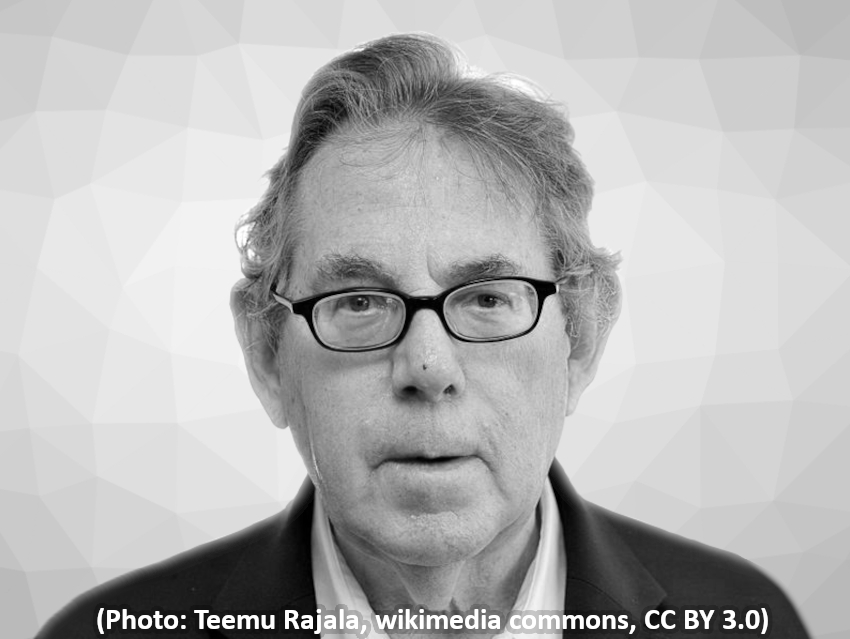The Chemistry Nobel Laureate Paul J. Crutzen has passed away on January 28, 2021. Crutzen’s main field of research was atmospheric chemistry. He is best known for his work on ozone depletion in the stratosphere. In 1995, Paul Crutzen was awarded the Nobel Prize in Chemistry jointly with Mario J. Molina, Mexico, and F. Sherwood Rowland, USA, “for their work in atmospheric chemistry, particularly concerning the formation and decomposition of ozone.”
In 1970, Paul Crutzen pointed out that emissions of N2O affect the level of nitrogen oxides in the stratosphere and showed that N2O is long-lived enough to reach the stratosphere. There it is converted to NO, which above about 30 km destroys ozone along with NO2 in a catalytic cycle. Crutzen pointed out that the increasing use of fertilizers leads to an increase in N2O emissions and to an increase in NO in the stratosphere, thus, human activities affect the stratospheric ozone layer. In the 1980s, he contributed significantly to the explanation of the physical and chemical basis for the formation of the ozone hole. This knowledge was the basis for the worldwide ban on ozone-depleting substances.
Paul J. Crutzen, born in Amsterdam, The Netherlands, on December 3, 1933, studied civil engineering. After various positions in the construction field, he worked as a computer programmer at Stockholm University, Sweden, in the Department of Meteorology in 1959. Parallel to his work, he studied meteorology and received his Ph.D. in 1968. He had a teaching position at the Department of Meteorology of Stockholm University, and completed his habilitation at the Meteorological Institute of Stockholm University (MISU) in 1973 with the thesis “On the photochemistry of ozone in the stratosphere and troposphere and pollution of the stratosphere by high-flying aircraft.”
From 1977 to 1980, Crutzen headed a department at the National Center for Atmospheric Research in Boulder, Colorado, USA. In 1980, he was appointed a Scientific Member of the Max Planck Institute for Chemistry in Mainz, Germany, and the Max Planck Society. From 1980 to 2000, he was Director of the Max Planck Institute for Chemistry in Mainz.
He also held teaching positions at the Scripps Institution of Oceanography at the University of California at San Diego, USA, the National University of Seoul, South Korea, and the Georgia Institute of Technology, Atlanta, USA, and was a Research Professor at the Department of Meteorology at Stockholm University.
In addition to the Nobel Prize, Paul Crutzen was awarded many other prizes, including the Tyler Prize for Environmental Achievement in 1989, the Volvo Environment Prize in 1991, and the Lomonosov Gold Medal in 2019.
Selected Publications
- The influence of nitrogen oxides on the atmospheric ozone content,
P. J. Crutzen,
Q. J. R. Meteorol. Soc. 1970, 96, 320–325.
https://doi.org/10.1002/qj.49709640815 - Atmospheric Aerosols: Biogeochemical Sources and Role in Atmospheric Chemistry,
M. O. Andreae,
Science 1997, 276, 1052–1058.
https://doi.org/10.1126/science.276.5315.1052 - Aerosols, Climate, and the Hydrological Cycle,
V. Ramanathan,
Science 2001, 294, 2119–2124.
https://doi.org/10.1126/science.1064034 - Albedo Enhancement by Stratospheric Sulfur Injections: A Contribution to Resolve a Policy Dilemma?,
Paul J. Crutzen,
Clim. Change 2006, 77, 211–220.
https://doi.org/10.1007/s10584-006-9101-y - The Anthropocene: Are Humans Now Overwhelming the Great Forces of Nature,
Will Steffen, Paul J. Crutzen, John R. McNeill,
AMBIO J. Hum. Environ. 2007, 36, 614–621.
https://doi.org/10.1579/0044-7447(2007)36[614:TAAHNO]2.0.CO;2. - N2O release from agro-biofuel production negates global warming reduction by replacing fossil fuels,
P. J. Crutzen, A. R. Mosier, K. A. Smith, W. Winiwarter,
Atmos. Chem. Phys. 2008, 8, 389–395.
https://doi.org/10.5194/acp-8-389-2008 - Exploring the geoengineering of climate using stratospheric sulfate aerosols: The role of particle size,
Philip J. Rasch, Paul J. Crutzen, Danielle B. Coleman,
Geophys. Res. Lett. 2008.
https://doi.org/10.1029/2007GL032179 - Global agriculture and nitrous oxide emissions,
Dave S. Reay, Eric A. Davidson, Keith A. Smith, Pete Smith, Jerry M. Melillo, Frank Dentener, Paul J. Crutzen,
Nat. Clim. Change 2012, 2, 410–416.
https://doi.org/10.1038/NCLIMATE1458 - Planetary Opportunities: A Social Contract for Global Change Science to Contribute to a Sustainable Future,
Ruth S. DeFries, Erle C. Ellis, F. Stuart Chapin, Pamela A. Matson, B. L. Turner, Arun Agrawal, Paul J. Crutzen, Chris Field, Peter Gleick, Peter M. Kareiva, Eric Lambin, Diana Liverman, Elinor Ostrom, Pedro A. Sanchez, James Syvitski,
BioScience 2012, 62, 603–606.
https://doi.org/10.1525/bio.2012.62.6.11
Also of Interest
- Mario Molina (1943 – 2020),
ChemistryViews.org 2020.
Nobel Laureate known for his work on ozone depletion passed away - Max Planck Institute for Chemistry mourns the loss of Nobel Laureate Paul Crutzen,
Susanne Brenner,
Max-Planck-Institut für Chemie 29.1.2021




